Solutions to Midterm 2
advertisement
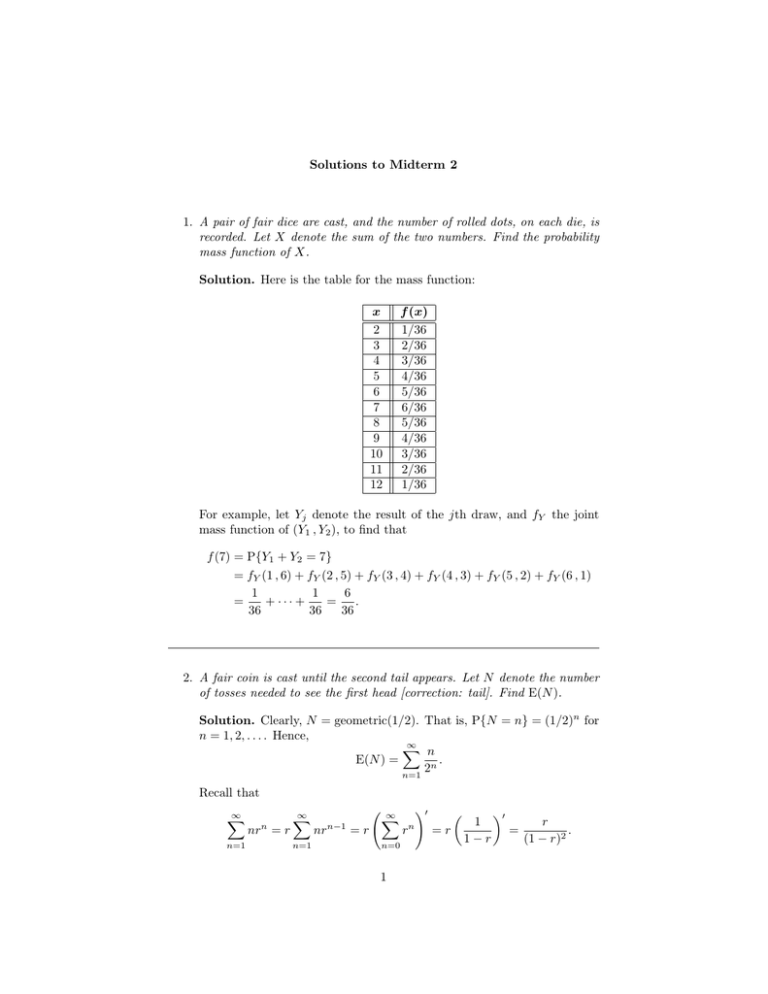
Solutions to Midterm 2
1. A pair of fair dice are cast, and the number of rolled dots, on each die, is
recorded. Let X denote the sum of the two numbers. Find the probability
mass function of X.
Solution. Here is the table for the mass function:
x
2
3
4
5
6
7
8
9
10
11
12
f (x)
1/36
2/36
3/36
4/36
5/36
6/36
5/36
4/36
3/36
2/36
1/36
For example, let Yj denote the result of the jth draw, and fY the joint
mass function of (Y1 , Y2 ), to find that
f (7) = P{Y1 + Y2 = 7}
= fY (1 , 6) + fY (2 , 5) + fY (3 , 4) + fY (4 , 3) + fY (5 , 2) + fY (6 , 1)
1
1
6
=
+ ··· +
=
.
36
36
36
2. A fair coin is cast until the second tail appears. Let N denote the number
of tosses needed to see the first head [correction: tail]. Find E(N ).
Solution. Clearly, N = geometric(1/2). That is, P{N = n} = (1/2)n for
n = 1, 2, . . . . Hence,
∞
X
n
E(N ) =
.
n
2
n=1
Recall that
∞
X
n=1
n
nr = r
∞
X
n=1
nr
n−1
=r
∞
X
n=0
1
!0
r
n
=r
1
1−r
0
=
r
.
(1 − r)2
Apply this with r = 1/2 to find that
E(N ) =
1/2
1−
1 2
2
= 2.
3. Suppose X is a random variable with Var(X) = 0. Compute the mass
function of X.
Solution. Recall that
h
i X
2
2
Var(X) = E (X − EX) =
(x − EX) f (x),
x
where f denotes the mass function of X. Because X has zero variance,
f (x) > 0 ⇒ (x − EX)2 = 0. Equivalently, P{X = EX} = 1, whence it
follows that X is nonrandom.
4. An urn contains n balls, numbered 1 through n. We pick two balls at
random, without replacement, all balls equally likely. The number of the
first drawn ball is denoted by X, and the number for the second drawn ball
by Y . Compute cov(X, Y ).
Solution. Let us first compute the joint mass function f of (X, Y ):
1
if 1 ≤ x 6= y ≤ n,
n(n
− 1)
f (x , y) =
0
otherwise.
Therefore, for all x = 1, . . . , n,
fX (x) =
n
X
f (x , y) =
y=1
y6=x
1
.
n
For other values of x, fX (x) = 0. That is, X is distributed uniformly on
{1 , . . . , n}. Similarly, Y is distributed uniformly on {1 , . . . , n}. Therefore,
n
X
k
n+1
EX = EY =
=
.
n
2
k=1
2
Also,
E(XY ) =
X
1≤i6=j≤n
i6=j
=
=
=
=
=
=
ij
=
n(n − 1)
X
1≤i,j≤n
ij
−
n(n − 1)
X
1≤i=j≤n
i=j
ij
n(n − 1)
! n
n
n
X
X
X
1
i
j −
i2
n(n − 1) i=1
j=1
i=1
(
)
2 X
n
n(n + 1)
1
−
i2
n(n − 1)
2
i=1
( )
2 X
n
1
n+1
2
2
n
−
i
n(n − 1)
2
i=1
2
n
X
n+1
1
n
−
i2
n−1
2
n(n − 1) i=1
2
n+1
1
n(2n2 + 3n + 1)
n
−
n−1
2
n(n − 1)
6
2
2
n+1
1 2n + 3n + 1
n
−
.
n−1
2
n−1
6
Therefore,
cov(X, Y ) =
n
n−1
n+1
2
2
−
1 2n2 + 3n + 1
n−1
6
2
1
n+1
1 2n2 + 3n + 1
=
−
n−1
2
n−1
6
2
2
n + 2n + 1 2n + 3n + 1
=
−
4(n − 1)
6(n − 1)
1
2
=
3n + 6n + 3 − 4n2 + 6n + 2
12(n − 1)
(n − 1)(n + 1)
n2 − 1
=−
=−
12(n − 1)
12(n − 1)
n+1
=−
.
12
3
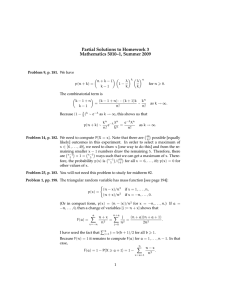

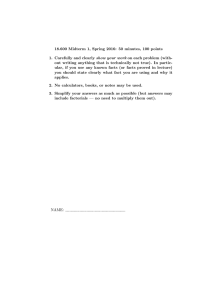
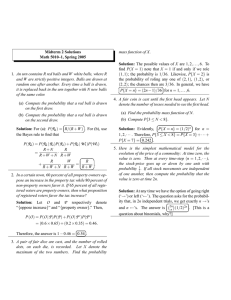
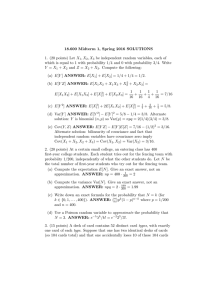
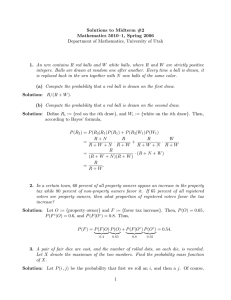

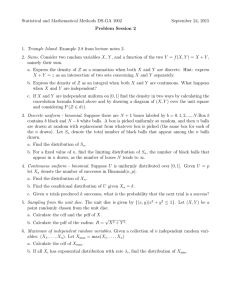
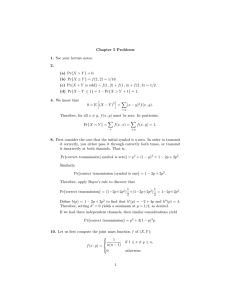
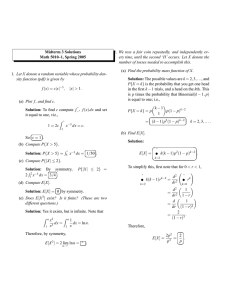
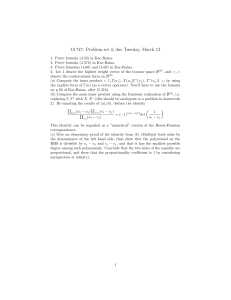
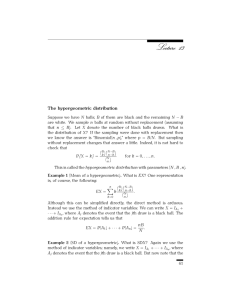
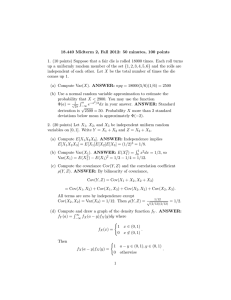
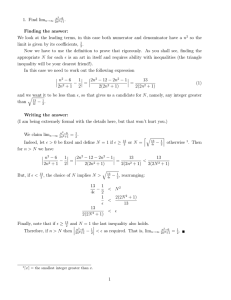
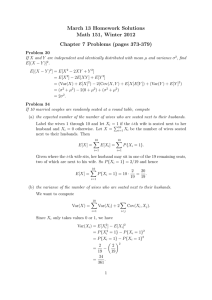
![David F. Anderson - Introduction to Probability (Cambridge Mathematical Textbooks) [SOLUTIONS MANUAL]-Cambridge University Press (2017)](http://s2.studylib.net/store/data/026133293_1-48efd6dc21ef6305a6d2b3b13d8f5e9f-300x300.png)